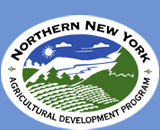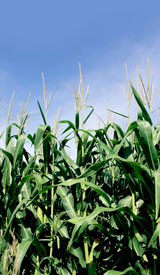February 4, 2008
Contact: Ev Thomas, W.H. Miner Agricultural Research Institute,
518-846-7121 x115;
Mike Hunter, Cornell Cooperative Extension of Jefferson County,
315-788-8450; Joe Lawrence, CCE Lewis County, 315-376-5270; Peter
Barney, CCE St. Lawrence County, 315-379-9192
Skyrocketing Costs Mean Farmers Must Attend NNY Fertilizer Meetings
March 19-21
Blame it on the increasing price of oil, more crop acreage in the U.S.,
more corn in China, ethanol, or politics. The bottom line is farmers
will pay a lot more per ton for fertilizer in 2008 than they did in
2007, says Ev Thomas, Vice President of Agricultural Programs at W.H.
Miner Agricultural Research Institute in Chazy, NY. That is why you
should attend one of the Making the Most of Your Fertilizer Dollar
workshops in Northern New York in March to learn how to cope with the
rising costs of crop production.
The fertilizer focused programs will be held March 19 at the Extension
Learning Farm in Canton, March 20 at Cornell Cooperative Extension of
Lewis County in Lowville, and March 21 at Cornell Cooperative Extension
of Jefferson County in Watertown.
Thomas says, �The USDA predicts fertilizer prices will be up by 18
percent. Try at least twice that increase based on the prices I have
been quoted by fertilizer dealers. The dealers themselves are already
paying over $100 per ton more for MAP (monoammonium phosphate, commonly
applied to corn crops) and urea than a year ago. I would say $600 per
ton for urea is not out of the question this year. Potash Corporation
has warned that the total change in the wholesale price of potash from
2007 to 2008 may be $100 per ton,� Thomas says.
Some experts are predicting that by spring 2008, nitrogen fertilizer
prices will increase by another ten percent or more over today�s already
very high prices, Thomas says.
�2008 would be a dandy year to develop a fertilizer plan based on soil
analysis and taking full credit for nutrients provided to soil by manure
applications,� Thomas says.
Thomas says a PSNT (presidedress nitrate test) is especially valuable
where spring-applied manure is incorporated into the soil soon after
application. At fifty cents per pound of nitrogen, saving 50 lbs of
unnecessary nitrogen application per acre on one 20-acre field means the
farmer keep $50 in his pocket.
Nutrient management research funded in part by the Northern New York
Agricultural Development Program has shown that starter fertilizer
applications of phosphorus and potassium can be eliminated on corn
fields that have high or very high soil fertility.
At the Miner Institute only starter nitrogen fertilizer is applied to
corn fields with high soil fertility and no fertilizer at all is applied
to legume-grass seedlings on high fertility soil. Thomas says a 50-50
blend of urea and ammonium sulfate is used on highly fertile cornfields,
applying approximately 100 pounds per acre of the resulting 33-0-0 blend
of fertilizer.
�The application we are using on our high fertility fields saves money
and time with fewer fertilizer hopper fill-ups, and it produces crops to
feed our dairy herd just fine,� Thomas says.
He adds that higher fertilizer prices mean every spreader-load of manure
becomes more valuable as a money-saving resource, so farmers can afford
to spend more time and fuel to take the manure to lower fertility
fields.
�Depending on the nutrient levels, applying one 4,000-gallon load of
manure, for example, could be worth $50 work of fertilizer you do not
have to buy and the potassium available in liquid dairy manure is
probably more plant-available than that in commercial fertilizer,�
Thomas says.
Thomas says a survey of seed sellers indicates their prices will rise by
more than the four percent USDA predicts.
�If our per-unit seed cost is only four percent more than last year here
at the Institute I will be very pleased -- and very surprised. I will be
amazed if total corn production costs are not up by at least ten percent
this year. Seed costs are just one more reason why Northern New York
farmers should attend the Making the Most of Your Fertilizer Dollar
workshops in March and make use of the regional research data on
nutrient management made possible by Cornell University researchers and
funding from the Northern New York Agricultural Development Program,�
Thomas says.
For more information on the mid-March fertilizer meetings, contact
Cornell Cooperative Extension. Information on fertilizer applications,
nutrient balancing and soil surveys is available on the Northern New
York Agricultural Development Program website at www.nnyagdev.org. A
committee of dairy, fruit, livestock, maple and vegetable producers
guides the Northern New York Agricultural Development Program that funds
research and educational outreach with practical results for NNY
farmers. Dairymen Jon Greenwood of Canton and Joe Giroux of Plattsburgh
co-chair the program. # # #



